
Fundamentals
Imagine a delicate stream, winding its way through a garden. Sometimes it flows straight and true, other times it dances in gentle ripples, or perhaps it coils into tight, playful eddies. This natural inclination, this unique expression of movement, is much like the inherent character of your hair. At Roothea, we understand that truly knowing your hair begins with observing its deepest nature.
Curl Pattern Recognition, at its heart, is the gentle art of perceiving the distinct shape your hair takes as it emerges from the scalp and cascades down its length. It’s the initial, tender gaze that acknowledges whether your strands unfurl in broad waves, spring into defined spirals, or coil into compact, delightful zigzags. This fundamental perception serves as a quiet guide, helping you connect with your hair’s needs in a way that honors its very being.
For those with textured hair, particularly within the rich heritage of Black and mixed-race communities, this recognition carries a special resonance. Generations have navigated the beauty and challenges of hair that defies a singular, linear expectation. Understanding the natural contours of your hair is not about rigid categorization; it is about cultivating a harmonious relationship with your strands, allowing them to flourish. This initial step invites you to see your hair not as something to be tamed, but as a living canvas expressing its own unique artistry.
Curl Pattern Recognition is the gentle art of discerning the inherent shape your hair takes, a fundamental step in understanding and honoring its unique nature.
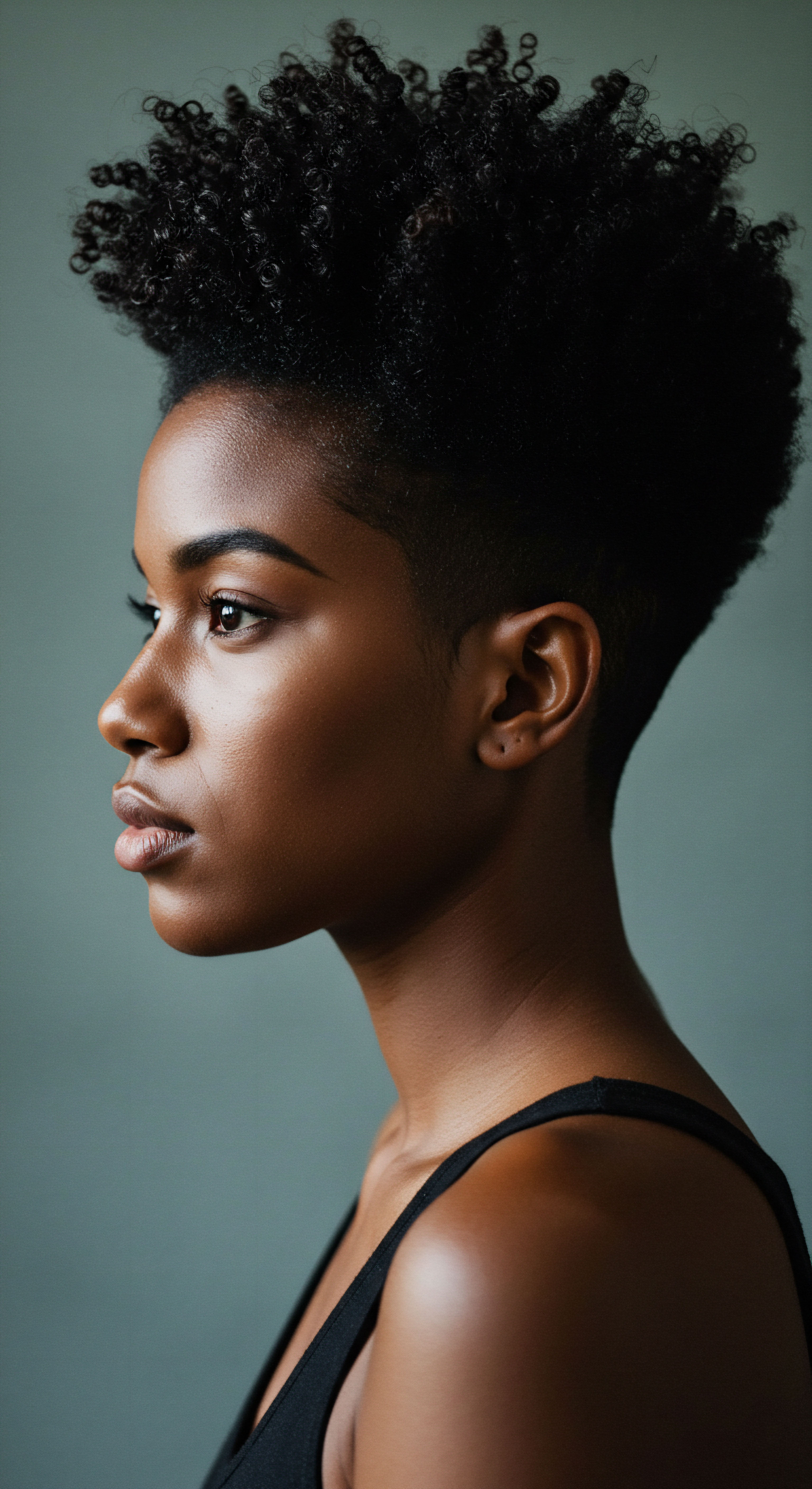
The Visual Language of Hair
Observing your hair’s visual language offers the simplest pathway into this understanding. After a gentle cleanse and conditioning, when your hair is free of product and allowed to air dry, watch how the individual strands behave. Do they lie flat, or do they begin to form an ‘S’ shape? Perhaps they shrink into a tighter ‘Z’ pattern or a distinct coil.
This visual cue provides a foundational understanding of your hair’s predisposition. It’s a starting point for dialogue between you and your strands, a way to begin to hear what they are communicating about their hydration needs and styling desires.
This initial visual assessment also helps in selecting the most appropriate, gentle care. Hair that coils tightly often requires more moisture, as natural oils from the scalp struggle to travel down its length. Conversely, wavier patterns might feel weighed down by overly rich products. Recognizing these subtle differences in visual presentation allows for a more intuitive and responsive approach to daily care, ensuring your hair receives precisely what it yearns for without excess or deprivation.

First Glimpses ❉ Unveiling the Shapes
The shapes your hair naturally assumes offer a spectrum of possibilities. These visual distinctions are often the first elements people notice and describe when speaking about textured hair. They range from the softest undulations to the most compact coils, each possessing its own charm and requiring a thoughtful touch.
- Waves ❉ These strands possess a gentle ‘S’ shape, a flowing curve that can range from a loose bend to a more defined ripple.
- Curls ❉ Characterized by distinct spirals or ringlets, these patterns often form an ‘O’ shape, varying in diameter from wide to pencil-sized.
- Coils ❉ These are tightly wound spirals or zigzags, often exhibiting significant shrinkage and a dense, compact appearance.
Each of these general categories holds a universe of variation within it, reflecting the incredible diversity of textured hair. This early stage of recognition celebrates that diversity, inviting curiosity rather than comparison.
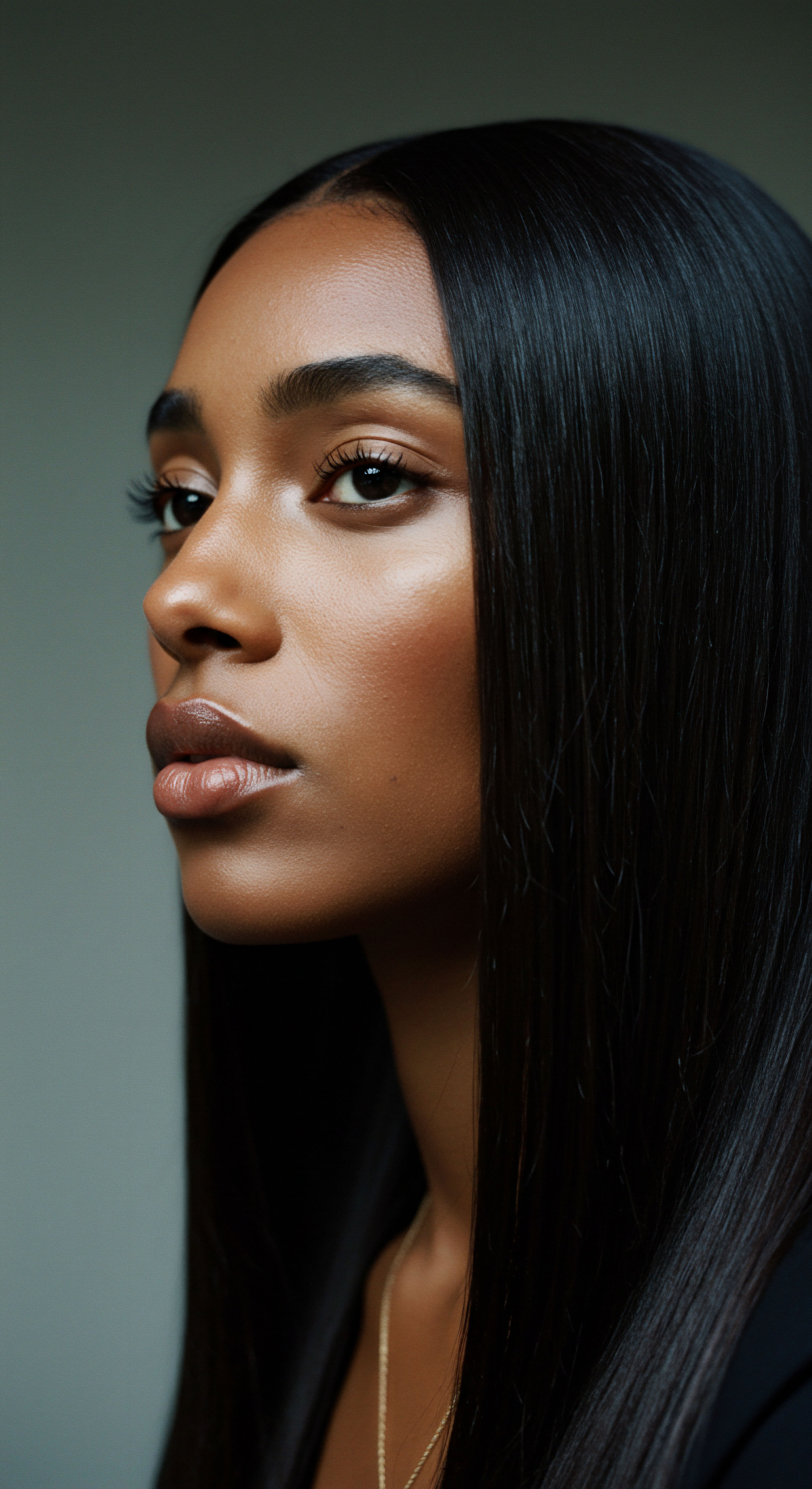
Intermediate
Moving beyond the initial visual appreciation, an intermediate understanding of Curl Pattern Recognition deepens our dialogue with textured hair. This level transcends simple visual classification, inviting a more nuanced consideration of how the hair’s inherent shape interacts with other vital characteristics, such as Porosity, Density, and Strand Width. For the Roothea community, this means discerning not just the outward appearance of a curl, but also its internal landscape, understanding how these attributes collectively influence the hair’s behavior in daily rituals and styling choices. It is a step toward truly listening to the hair’s unspoken needs, allowing for a more sophisticated and responsive care regimen that celebrates its full potential.
This deeper comprehension acknowledges that a hair strand’s journey from the follicle is a symphony of biological factors. The degree of curl, for instance, impacts how natural scalp oils travel down the hair shaft, directly influencing its propensity for dryness. Similarly, the cuticle’s openness (porosity) dictates how readily moisture enters and leaves the strand, a factor often influenced by the hair’s very architecture. Embracing this complexity allows for a more attuned approach, moving beyond generic advice to practices that truly nourish and support each unique curl.
An intermediate grasp of Curl Pattern Recognition considers the interplay of curl shape with porosity, density, and strand width, guiding more responsive and effective hair care.

Beyond the Surface ❉ The Hair’s Hidden Attributes
While the curl pattern offers a visible blueprint, other attributes provide a more complete picture of your hair’s unique composition. These characteristics, often less immediately apparent, significantly impact how your hair responds to products, humidity, and styling techniques.
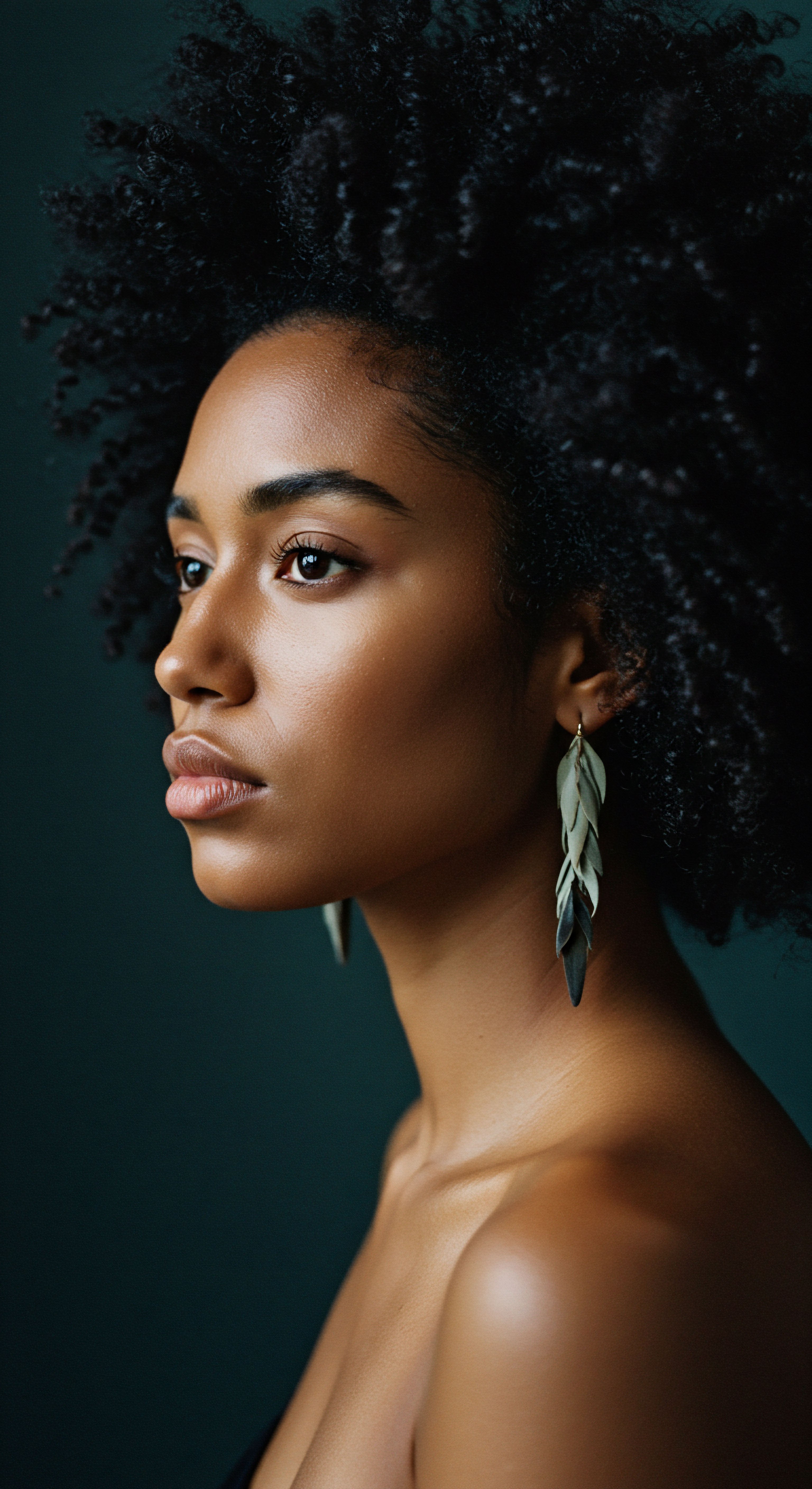
Understanding Porosity and Its Influence
Hair porosity describes the cuticle’s ability to absorb and retain moisture. A hair strand’s cuticle, the outermost layer, consists of overlapping scales. When these scales lie flat, the hair has low porosity, meaning it resists water absorption but retains moisture well once absorbed. When the scales are raised, the hair has high porosity, readily absorbing water but losing it just as quickly.
Textured hair, particularly highly coiled patterns, often exhibits higher porosity due to the natural lifting of the cuticle at the bends of the curl. This characteristic demands careful attention to moisturizing and sealing practices.
A simple test for porosity involves placing a clean strand of hair in a glass of water. If it floats, it likely has low porosity. If it sinks slowly, it’s likely medium porosity.
If it sinks quickly, it suggests high porosity. This understanding helps guide product selection, favoring lighter, penetrating oils for low porosity hair and heavier, sealing butters for high porosity hair.
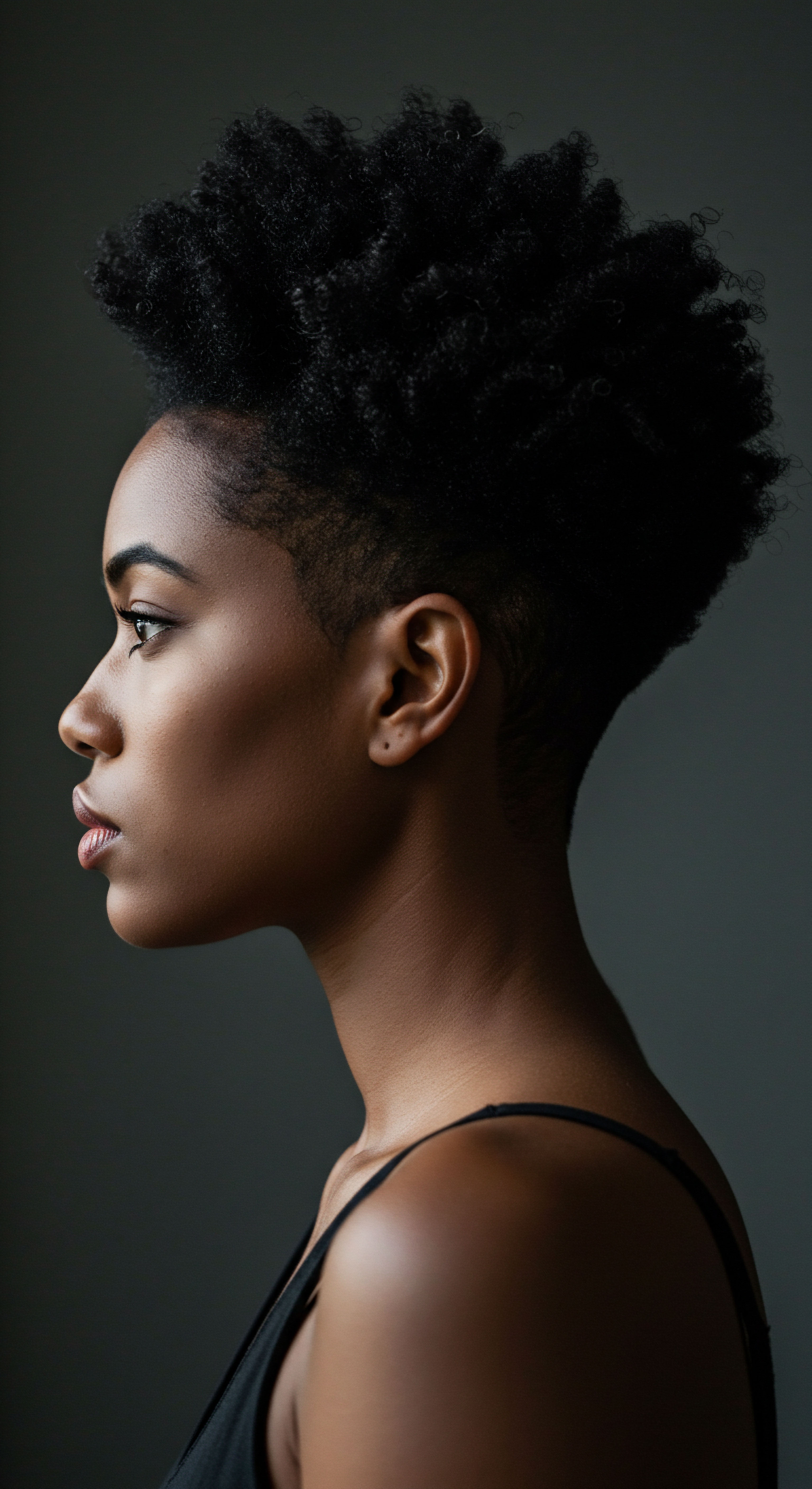
Density and Strand Width ❉ A Fuller Picture
Hair Density refers to the number of individual hair strands on your scalp. You might have fine individual strands but a high density, giving the appearance of thick hair. Conversely, you could have thick individual strands but low density, resulting in a less voluminous look.
Strand Width, or the diameter of an individual hair, also plays a part. Fine strands are delicate and prone to breakage, while coarse strands are more robust.
These factors, combined with curl pattern, create a personalized hair care equation. For example, a person with fine, high-porosity coils will require different products and techniques than someone with coarse, low-porosity waves. This intermediate level of recognition empowers you to move beyond generalized advice, allowing for truly tailored care that respects your hair’s unique composition.
| Attribute Curl Pattern |
| Description The natural shape of the hair strand (waves, curls, coils). |
| Care Implication for Textured Hair Influences how natural oils distribute, dictating moisture needs and detangling strategies. |
| Attribute Porosity |
| Description Hair's ability to absorb and retain moisture. |
| Care Implication for Textured Hair Determines the type and frequency of moisturizing and sealing products needed. |
| Attribute Density |
| Description The number of hair strands on the scalp. |
| Care Implication for Textured Hair Guides product quantity and styling approaches to avoid weighing down or overwhelming the hair. |
| Attribute Strand Width |
| Description The diameter of individual hair strands (fine, medium, coarse). |
| Care Implication for Textured Hair Affects hair's resilience, its susceptibility to breakage, and its ability to hold styles. |
| Attribute Understanding these elements together leads to a more harmonious and effective hair care practice. |

Advanced
A comprehensive delineation of Curl Pattern Recognition involves discerning the inherent helical configuration of keratinized filaments as they emerge from the follicular ostia, an interpretation extending beyond mere visual classification to encompass the intricate interplay of follicular morphology, cortical cell distribution, and disulfide bond arrangements, profoundly shaping the hair’s mechanical properties, hydration dynamics, and response to external stimuli, particularly pertinent within the rich spectrum of textured, Afro-descendant, and mixed-heritage hair. This advanced perspective requires a deep dive into the biological underpinnings of hair formation, a critical examination of historical classification systems, and a sensitive awareness of the profound cultural and societal implications that hair texture carries, especially for Black and mixed-race individuals. It is a journey into the very cellular architecture of hair, acknowledging the scientific precision that underpins its macroscopic beauty, while also recognizing the enduring human stories etched into each curl and coil.
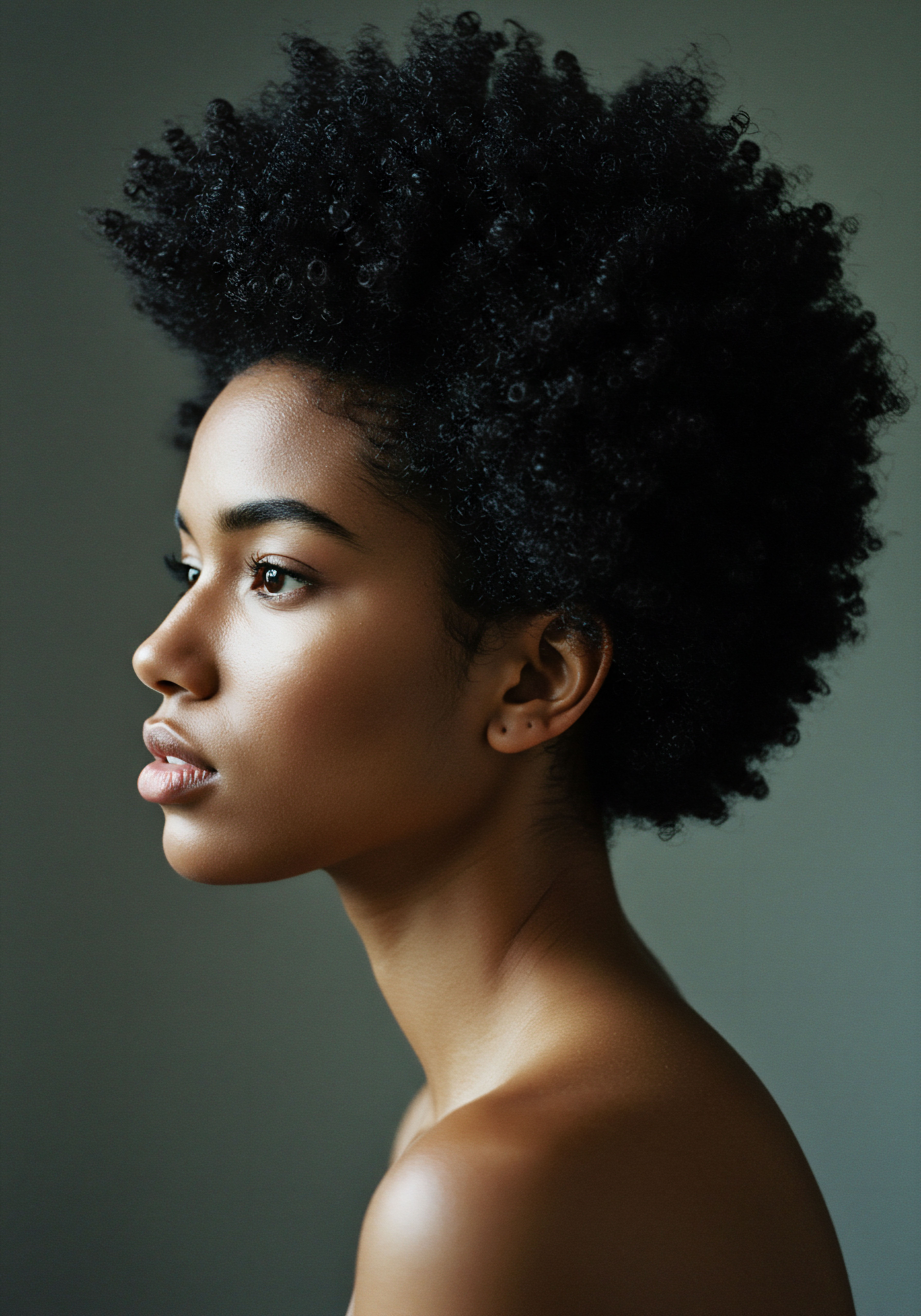
The Biological Symphony of Hair Formation
The physical manifestation of a curl pattern is a complex biological phenomenon, orchestrated deep within the scalp. The shape of the hair follicle itself stands as the primary determinant. Round follicles typically produce straight hair, while oval or asymmetrical follicles yield wavy or curly hair.
A flatter, more elliptical follicular shape results in the tightest coils and kinks. This follicular geometry is not merely a passive mold; it actively influences the angle at which the hair emerges from the scalp, contributing significantly to its ultimate curl.
Beyond the follicle’s shape, the internal architecture of the hair shaft, specifically the Cortex, plays a critical role. The cortex, comprising the majority of the hair’s mass, consists of keratin proteins. In straight hair, these keratin structures are often distributed symmetrically.
Conversely, in curly hair, keratin distribution can be asymmetrical, with a greater concentration of certain keratin types on the inner curve of the hair shaft. This uneven distribution causes the hair fiber to bend and twist, forming its characteristic spiral.
Furthermore, the chemical bonds within the hair’s keratin proteins are paramount to curl formation. Disulfide Bonds, strong covalent linkages between sulfur atoms in the amino acid cysteine, provide the permanent structural integrity of the hair. The number and precise arrangement of these bonds directly correlate with the degree of curl.
A greater prevalence of disulfide bonds leads to a tighter, more defined curl pattern. Temporary Hydrogen Bonds, susceptible to water and humidity, also influence the hair’s shape, explaining why curls can loosen when wet and reform as they dry.
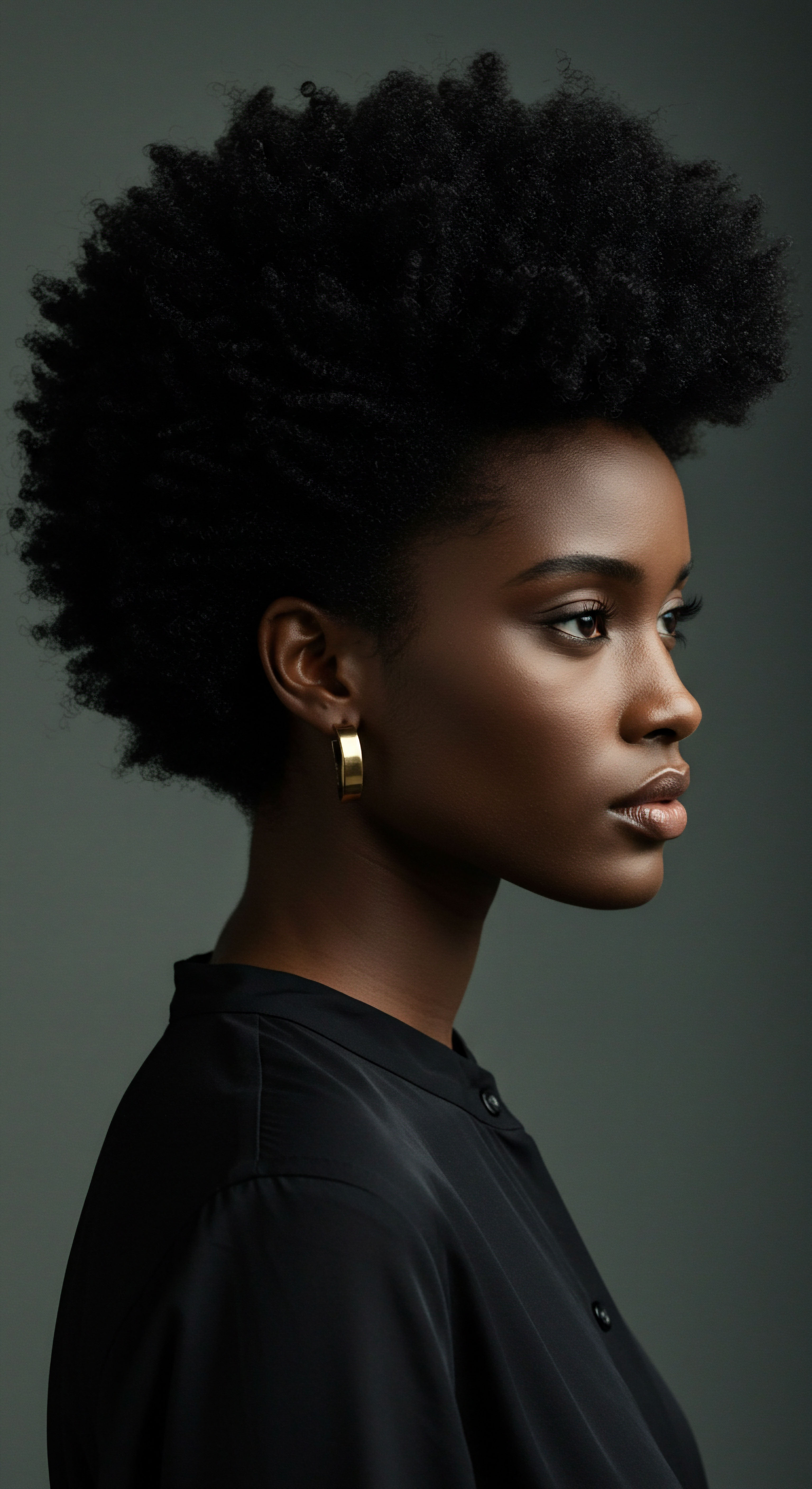
Microscopic Revelations ❉ Cortical Cell Distribution
Delving deeper, research indicates that the distribution of different cortical cell types—orthocortex and paracortex—within the hair fiber’s cortex is associated with curliness. Straight hair often displays a symmetrical distribution of these cells, whereas curly hair exhibits a non-symmetrical arrangement. This microscopic asymmetry, a testament to the hair’s sophisticated biological design, underscores why a true interpretation of curl pattern transcends superficial observation, reaching into the very cellular processes that give hair its distinctive form.
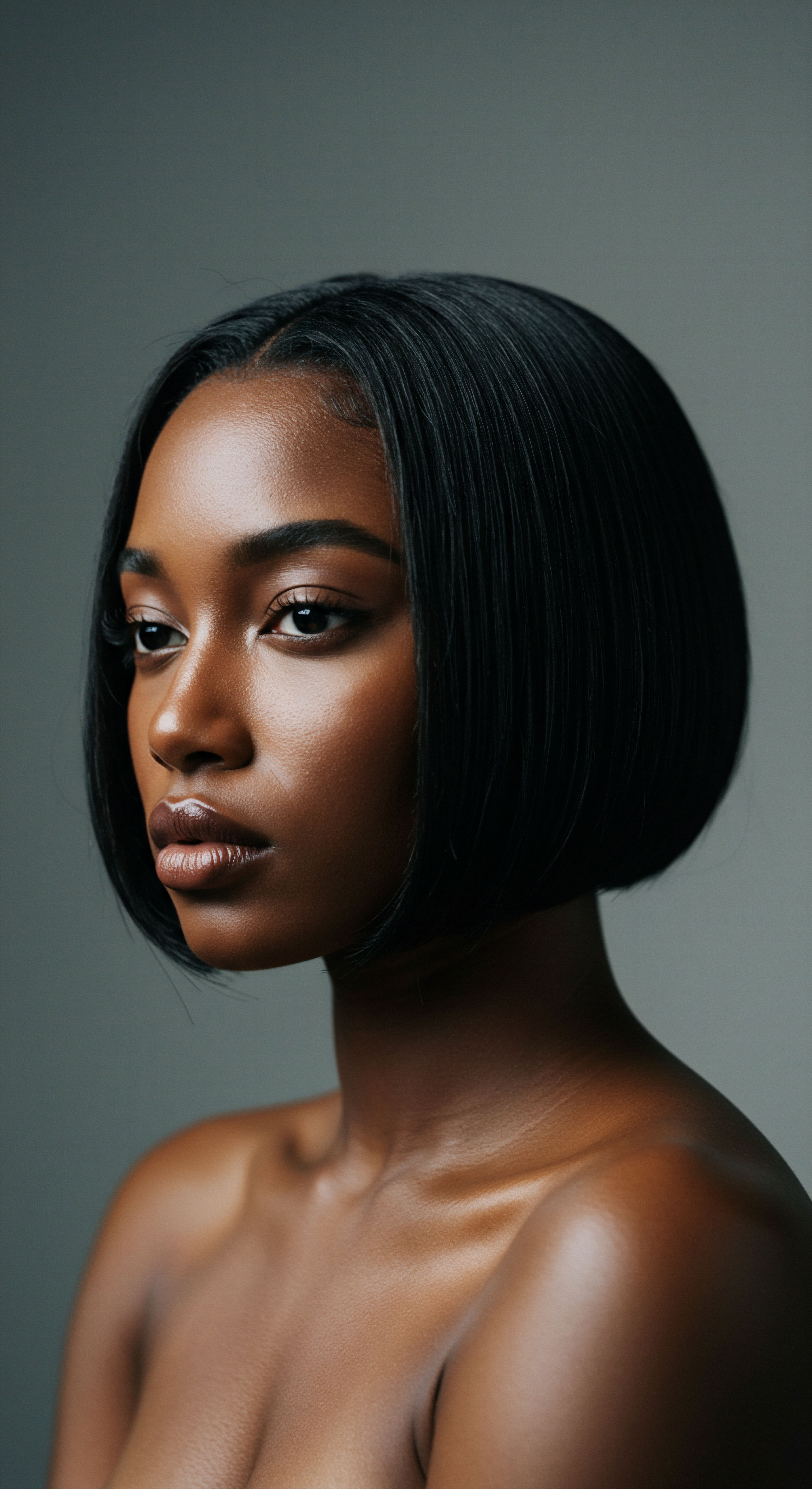
Historical Classifications and Their Complex Legacies
The history of hair classification systems, particularly those applied to textured hair, is fraught with complex societal implications. While contemporary systems like the Andre Walker hair typing chart (categorizing hair into types 1-4 with subcategories A-C) aim to assist in product selection and care, their historical antecedents are less benign.
Early 20th-century hair typing was, regrettably, entwined with racial categorization, serving to support racist ideologies. Eugen Fischer, a German Nazi “scientist,” devised a “hair gauge” in 1908 to assess individuals’ proximity to whiteness based on hair texture. Similarly, the Apartheid Pencil Test in 1948 informally classified individuals; if a pencil remained in their hair when shaken, they could not be considered white. These systems highlight a painful past where hair texture was weaponized to enforce racial hierarchies and perpetuate discrimination.
The Andre Walker system, popularized in the 1990s, aimed to simplify hair care. Yet, even this system has faced criticism for potentially privileging looser curl patterns over tighter, coily textures, inadvertently perpetuating a subtle texturism within the natural hair community. Understanding these historical currents provides crucial context, urging us to approach curl pattern recognition with sensitivity and a commitment to inclusivity.

The Unseen Burden ❉ Hair Discrimination and Its Societal Weight
The implications of hair texture extend far beyond personal care, deeply impacting social and economic opportunities for Black individuals. Discriminatory grooming policies, often rooted in Eurocentric beauty standards, have historically marginalized and continue to penalize natural hairstyles, such as afros, twists, locs, and braids.
A sobering reality emerges from recent data ❉ Black Women’s Hair is 2.5 Times More Likely to Be Perceived as Unprofessional Than That of Their Counterparts. Furthermore, a significant 66% of Black women report changing their hair for job interviews, with 41% specifically altering their hair from curly to straight to meet perceived professional norms. This pressure is acutely felt by younger Black professionals, with 44% of Black women under 34 feeling compelled to use a straight-haired headshot. Over 20% of Black women aged 25-34 have even been sent home from work because of their hair. This phenomenon, where natural hair becomes a barrier to professional advancement, underscores the urgent need for legislation like the CROWN Act, which prohibits race-based hair discrimination.
| Discriminatory Outcome Perception of Unprofessionalism |
| Statistical Impact (2023 CROWN Workplace Research Study) 2.5x more likely for Black women's hair to be deemed unprofessional. |
| Discriminatory Outcome Hair Alteration for Job Interviews |
| Statistical Impact (2023 CROWN Workplace Research Study) 66% of Black women change their hair for interviews; 41% specifically straighten curly hair. |
| Discriminatory Outcome Pressure for Straight Hair in Interviews |
| Statistical Impact (2023 CROWN Workplace Research Study) 54% of Black women are more likely to feel they must wear straight hair for success. |
| Discriminatory Outcome Workplace Microaggressions |
| Statistical Impact (2023 CROWN Workplace Research Study) Black women with coily/textured hair are 2x as likely to experience microaggressions. |
| Discriminatory Outcome Sent Home from Work |
| Statistical Impact (2023 CROWN Workplace Research Study) Over 20% of Black women aged 25-34 have been sent home due to their hair. |
| Discriminatory Outcome These statistics reveal a systemic issue where hair texture significantly impacts career trajectories and daily experiences for Black women. |
Hair discrimination profoundly impacts Black women’s professional lives, with statistics revealing a significant pressure to conform to Eurocentric beauty standards.
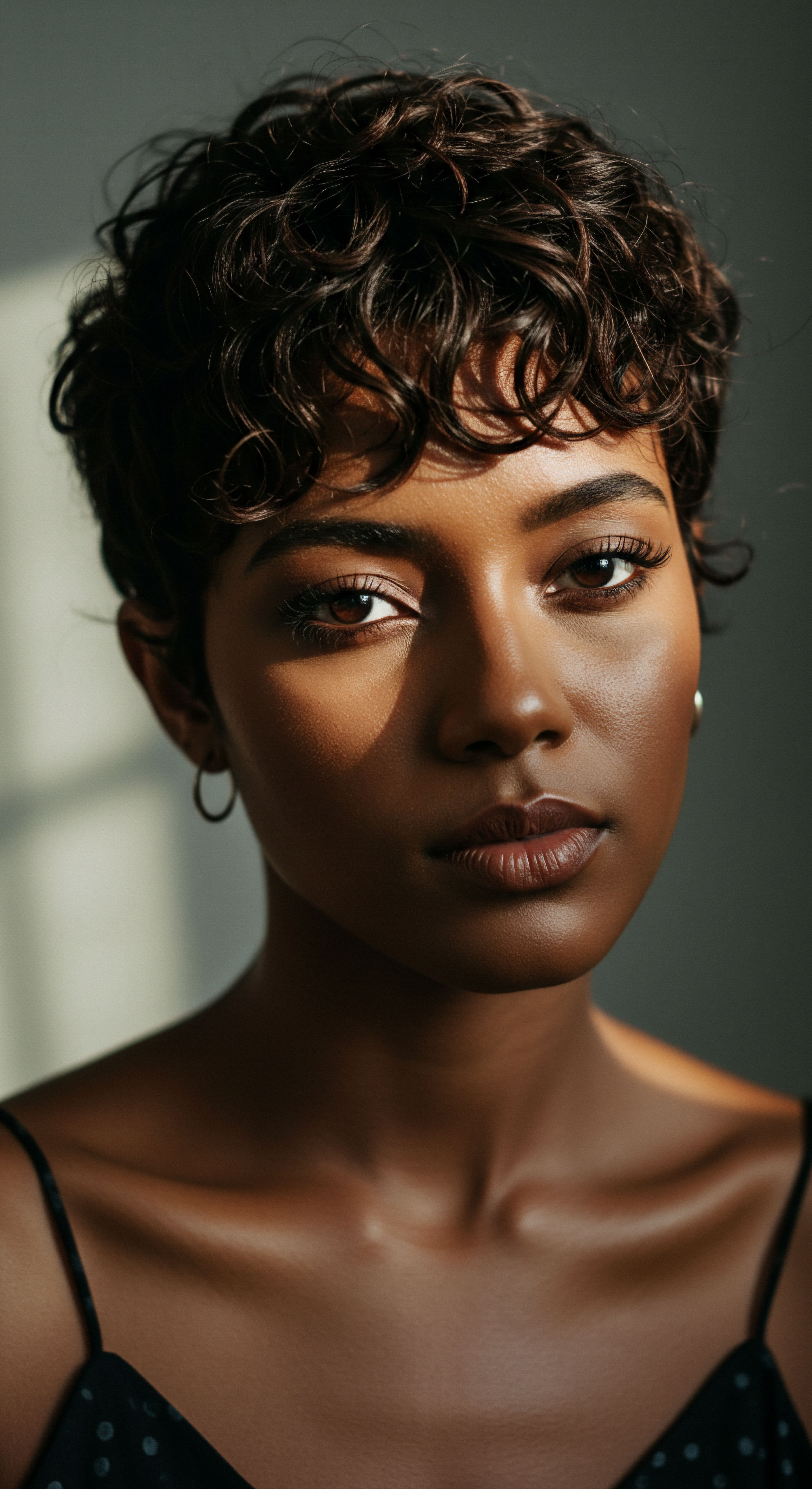
The Advanced Interpretation ❉ Implications for Research and Industry
For experts and researchers, the advanced meaning of Curl Pattern Recognition extends into trichology, cosmetic chemistry, and even artificial intelligence. Precise categorization of curl patterns aids in targeted product development, ensuring formulations effectively address the unique needs of different hair textures. For instance, understanding the higher porosity and fragility of tightly coiled hair guides the creation of humectant-rich, protective products.
In scientific research, objective curl pattern classification tools are crucial for studying hair loss disorders, such as Central Centrifugal Cicatricial Alopecia (CCCA), which disproportionately affects Black women. The ability to accurately stratify patients based on curl pattern allows for more precise diagnostic methods and tailored treatment protocols. Furthermore, advancements in machine learning and image processing are paving the way for automated hair pattern detection, assisting in dermatoscopic analysis and disease identification, though challenges persist in accurately recognizing subtle variations in texture.
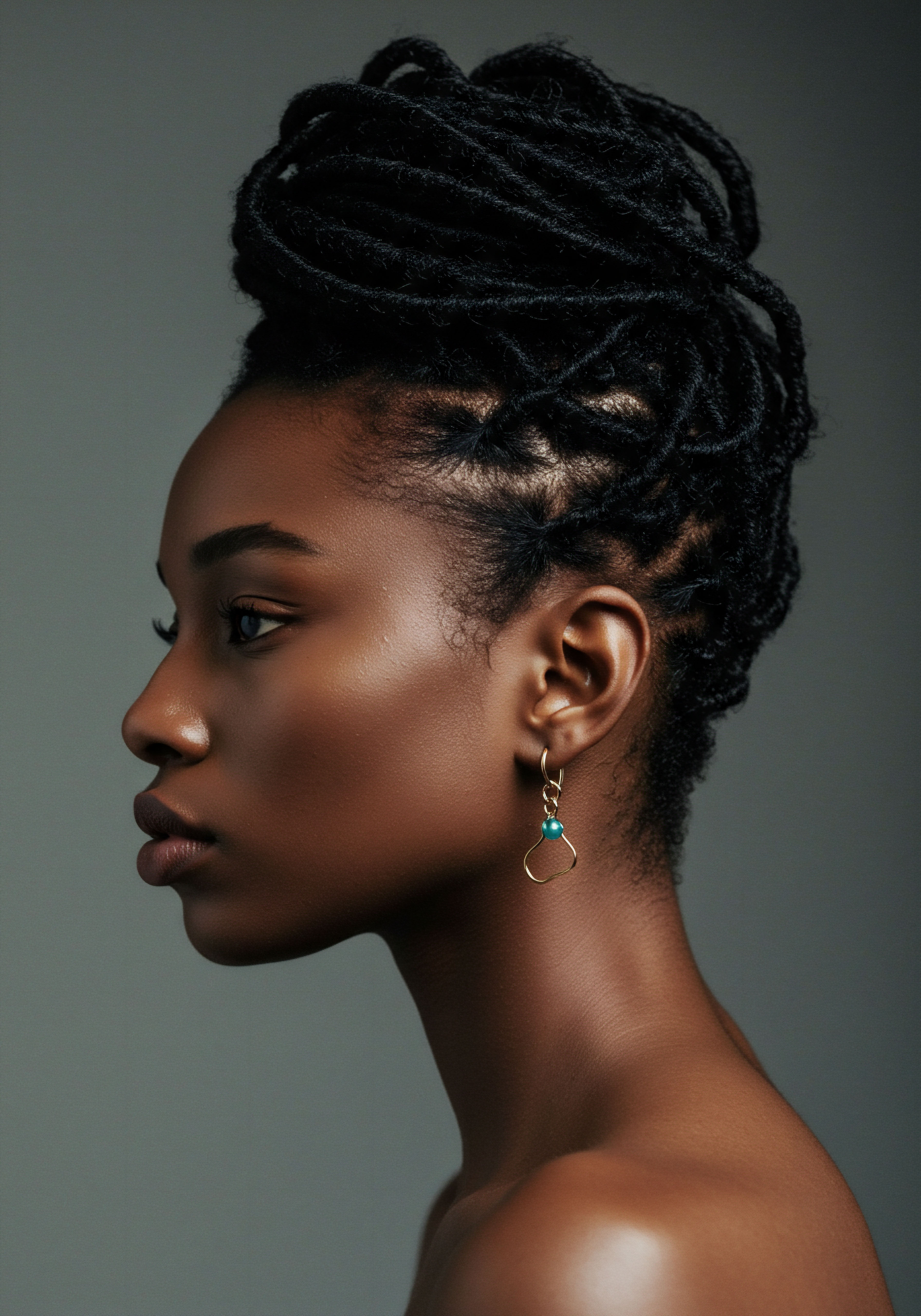
Beyond the Individual ❉ Societal and Cultural Significance
The sophisticated interpretation of curl pattern recognition transcends the individual strand, touching upon broader societal and cultural narratives. Hair, particularly within the African diaspora, has long served as a potent symbol of identity, resistance, and cultural pride. From ancient African communities where hairstyles denoted social rank and marital status, to the Black Power Movement of the 1960s and 70s where the afro became a powerful emblem of self-acceptance, hair has been a canvas for profound expression.
The journey of embracing natural hair, often beginning with an individual’s recognition of their curl pattern, becomes a collective act of reclaiming heritage and challenging oppressive beauty standards. This ongoing cultural shift highlights the beauty inherent in authenticity and diversity, reshaping perceptions of what is considered professional, beautiful, and valuable in society. The continued evolution of curl pattern recognition, therefore, is not merely a scientific endeavor; it is a profound cultural movement, affirming the inherent dignity and artistry of textured hair.

Reflection
As we draw our exploration of Curl Pattern Recognition to a close, we find ourselves standing at a luminous crossroads where science meets spirit, where the microscopic dance of keratin gives rise to the grand narrative of identity. Each curl, each wave, each coil carries within its structure not just the blueprint of its formation, but echoes of history, whispers of resilience, and the vibrant hum of individual expression. At Roothea, we believe that truly understanding your hair, down to its very pattern, is an act of profound self-love, a gentle affirmation of the unique beauty that resides within you.
This journey of recognition, from the simplest visual cue to the deepest scientific insight, is a continuous invitation to cultivate a relationship with your hair that is rooted in respect and informed by knowledge. It encourages a shift in perspective, transforming care routines from mere tasks into mindful rituals, where every product chosen and every technique applied is a conscious act of nourishment. The nuanced world of textured hair, with its diverse patterns and individual needs, stands as a testament to the boundless artistry of nature, reminding us that true beauty thrives in authenticity and celebration of what is inherently yours.

References
- Banks, Ingrid. Hair Matters ❉ Beauty, Power, and Black Women’s Consciousness. New York University Press, 2000.
- Carpenter, Tara S. “Why Does Your Hair Curl In The Summer? A Chemist Explains The Science Behind Hair Structure.” UMBC ❉ University Of Maryland, Baltimore County, 2023.
- Crick, Francis H. C. “The Coiled-Coil Alpha-Helix ❉ Structure and Properties.” Nature, 1952.
- Dermatology Times. “Curl pattern classification ❉ A potential tool for communication and risk stratification.” Dermatology Times, 2022.
- Dove CROWN Research Study for Women. “The 2019 CROWN Research Study for Women.” 2019.
- Dove CROWN Research Study for Women. “The New CROWN 2023 Workplace Research Study.” 2023.
- Fischer, Eugen. Bases of Human Heredity. Gustav Fischer Verlag, 1908.
- Good Housekeeping. “How to Find Your Curl Pattern Type – Curly Hair Types Chart.” Good Housekeeping, 2023.
- Kajiura, R. et al. “Asymmetrical distribution of cortical cells in curly hair.” Journal of Structural Biology, 2006.
- Leach, Edmund. “Magical Hair.” Journal of the Royal Anthropological Institute of Great Britain and Ireland, 1958.
- Pauling, Linus, and Robert B. Corey. “The Structure of Hair, Muscle, and Related Fibrous Proteins.” Proceedings of the National Academy of Sciences, 1950.
- Robbins, Clarence R. Chemical and Physical Behavior of Human Hair. Springer, 2012.
- Rogers v. American Airlines, Inc. 527 F. Supp. 229 (S.D.N.Y. 1981).
- Stewart, Jacqueline. Spectacular Intimacies ❉ Texture, Ethnicity, and a Touch of Black Cultural Politics. University of Illinois at Chicago, 2017.
- Walker, Andre. Andre Talks Hair. Simon & Schuster, 1999.